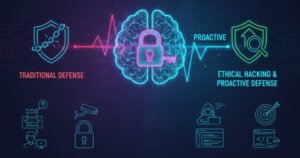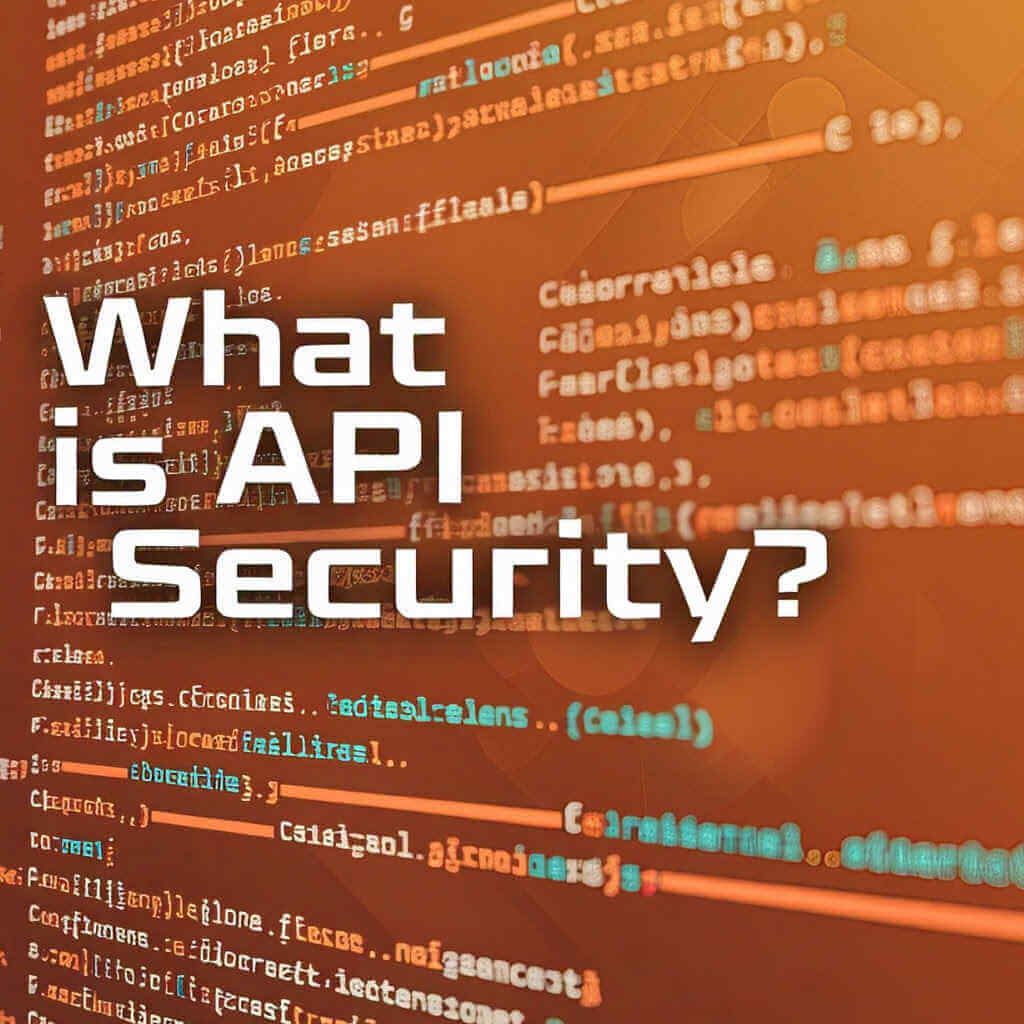Application Programming Interfaces (APIs) are the backbone of modern web and mobile applications. From social media platforms and e-commerce sites to mobile apps and IoT devices, APIs enable seamless data exchange and functionality integration. However, with this growing dependency on APIs comes a significant rise in security threats. This is where API security becomes not just relevant—but essential.
This blog dives into what API security is, why it’s critical in 2025, how it differs from general application security, and offers an overview of GraphQL APIs, which have unique security considerations.
Table of Contents
What is API Security?
API security refers to the processes and practices used to protect APIs from unauthorized access, misuse, and cyberattacks. It encompasses a range of strategies including authentication, authorization, rate limiting, encryption, and threat detection to ensure that APIs remain secure throughout their lifecycle.
Because APIs are often exposed over the internet and accessible by third parties, they are prime targets for attacks like:
Broken Object Level Authorization (BOLA)
Injection attacks
Man-in-the-Middle (MitM) attacks
Data exposure through insecure endpoints
Denial-of-Service (DoS) attacks
Key Objectives of API Security
Confidentiality: Ensure sensitive data is not exposed to unauthorized users.
Integrity: Prevent tampering with requests and responses.
Availability: Maintain access and uptime for legitimate users.
Accountability: Ensure proper logging and auditing of API interactions.
Why API Security is Important

1. APIs are the New Attack Surface
APIs are now the primary way applications communicate. Gartner predicts that by 2025, over 90% of web-enabled applications will have more attack surface area exposed via APIs than user interfaces. This makes API security a top priority.
2. APIs Handle Sensitive Data
APIs often manage sensitive data, including personal information, financial details, and business logic. If compromised, this can lead to serious data breaches and legal ramifications under data protection laws like GDPR, HIPAA, and CCPA.
3. Increased Adoption of Microservices
As organizations move towards microservices architectures, the number of APIs increases exponentially. Without proper security measures, this proliferation can create unmanaged and unmonitored endpoints, commonly known as API sprawl.
4. Business Disruption and Reputation Loss
An insecure API can be exploited to manipulate data, shut down services, or even pivot into internal networks. These incidents can result in significant financial losses and long-term reputational damage.
Before we move on, your business might be at risk, let our experts secure your data and prevent breaches. Talk to us today! Tap the image below to schedule your FREE Consultation Now!
API Security vs. General Application Security
While general application security focuses on securing user interfaces and back-end services, API security is specifically tailored to how data is exchanged between applications. Here’s how they differ:
| Feature | General Application Security | API Security |
|---|---|---|
| Focus Area | Front-end UIs and user interactions | Machine-to-machine communication |
| Threat Surface | Web app logic, browser-based attacks | Endpoints, headers, payloads |
| Authentication | User sessions, cookies | OAuth 2.0, JWT, API keys |
| Data Exposure | Typically controlled via UI | Direct access to database via endpoints |
| Rate Limiting | Often less granular | Crucial to avoid abuse |
This distinction highlights the need for specialized testing and monitoring tools, such as API gateways, security scanning tools, and Web Application Firewalls (WAFs) with API-specific rulesets.
An Overview of GraphQL APIs
As developers seek more flexible alternatives to RESTful APIs, GraphQL has gained popularity for its efficiency and customization. Developed by Facebook, GraphQL allows clients to request exactly the data they need, no more and no less.
How GraphQL Works
Unlike REST, where you have multiple endpoints for different resources, GraphQL typically operates through a single endpoint. The client sends a query specifying the fields it needs, and the server responds with just that data.
Example:
query {
user(id: "123") {
name
email
}
}
This approach reduces the number of requests, minimizes over-fetching and under-fetching, and enhances client-side flexibility.
Read this post to get more on GraphQl APIs.
Security Challenges in GraphQL APIs
While GraphQL offers performance and flexibility, it also introduces unique security challenges:
1. Overexposure of Data
Clients can request deep and nested data in a single query. Without proper control, this could inadvertently expose sensitive information.
2. Complex Query Attacks
Attackers can craft malicious queries that consume server resources excessively, leading to Denial-of-Service (DoS) scenarios.
3. Injection Attacks
GraphQL APIs can still be vulnerable to injection attacks if input validation is not handled properly.
4. Lack of Granular Authorization
Proper access controls must be implemented at the field level, not just the endpoint level, to avoid unauthorized data access.
Best Practices for Securing APIs (Including GraphQL)
Use Strong Authentication and Authorization
Implement OAuth 2.0 or OpenID Connect. For GraphQL, ensure field-level authorization is enforced.Rate Limiting and Throttling
Prevent abuse by limiting the number of API calls from a single source.Schema Whitelisting and Query Complexity Analysis
For GraphQL, implement depth and complexity limits to avoid DoS.Input Validation and Output Encoding
Sanitize all input data and encode responses to prevent injection attacks.Use HTTPS and Encrypt Sensitive Data
Always transmit API traffic over HTTPS and encrypt sensitive data both in transit and at rest.Regular API Security Testing
Conduct penetration testing and automated scans to detect vulnerabilities.Deploy API Gateways and WAFs
Utilize gateways to manage and secure traffic and enforce security policies.
Conclusion
As APIs become central to software development, securing them is critical for protecting both data and business continuity. API security is distinct from general application security, requiring its own set of practices, tools, and strategies. With evolving technologies like GraphQL, organizations must stay informed and vigilant to safeguard against emerging threats.
By integrating strong authentication, enforcing proper access controls, and performing regular security assessments, businesses can ensure that their APIs remain a secure bridge—not a vulnerable gap—in their digital infrastructure.
References
Why Businesses Trust SecureMyOrg for Comprehensive Network Security
At SecureMyOrg, we uncover and fix all possible security vulnerabilities of mobile and web, while providing solutions to mitigate risks. We are trusted by renowned companies like Yahoo, Gojek and Rippling, and with 100% client satisfaction, you’re in safe hands!







Some of the things people reach out to us for –
- Building their cybersecurity program from scratch – setting up cloud security using cost-effective tools, SIEM for alert monitoring, building policies for the company
- Vulnerability Assessment and Penetration Testing ( VAPT ) – We have certified professionals, with certifications like OSCP, CREST – CPSA & CRT, CKA and CKS
- DevSecOps consulting
- Red Teaming activity
- Regular security audits, before product release
- Full time security engineers.
Relevant Posts

How To Inspect Encrypted Traffic Without Breaking Privacy
Network administrators face a challenge: securing systems while respecting privacy. This guide explains how to inspect encrypted traffic without breaking privacy using metadata, anomaly detection, and machine learning ensuring visibility, compliance, and trust.

How to Audit Infrastructure as Code (IaC) for Security Vulnerabilities
Discover how to audit Infrastructure as Code (IaC) for security vulnerabilities with this practical guide. Learn to scan IaC files using tools like Checkov, fix issues like exposed resources, and integrate audits into CI/CD pipelines. Protect your cloud systems from misconfigurations and ensure compliance with clear, actionable steps.

DevSecOps Best Practices: Integrating Security Early in Your CI/CD Pipeline
This article provides a practical guide to embedding security into every stage of your CI/CD pipeline. Learn core DevSecOps best practices like SAST, DAST, dependency scanning, secrets management, and compliance automation to catch vulnerabilities early, foster a culture of shared ownership, and build a secure-by-design development process that accelerates release cycles.

5 Cloud Misconfigurations That Lead to Data Breaches
Cloud misconfigurations are one of the leading causes of data breaches, yet they’re also among the most preventable. From exposed storage buckets to weak IAM policies, attackers exploit these mistakes daily. Learn about the top 5 misconfigurations and how your organization can fix them before they lead to costly data exposure.

How Can Ethical Hacking Training Elevate Your Internal Cybersecurity?
Ethical hacking training empowers organizations to strengthen internal cybersecurity by uncovering vulnerabilities before attackers do. From mastering penetration testing to enhancing incident response, this training builds a proactive security culture. Learn how Secure My ORG’s programs can elevate your team’s skills and fortify defenses against modern threats like AI-driven attacks.

AI‑Generated Malware: Threat or Hype?
AI-generated malware uses advanced algorithms to create adaptive and hard-to-detect threats, posing serious challenges for modern cybersecurity defenses. Unlike traditional malware, it can evolve on its own, learning how to bypass security systems without human input. As a result, cybersecurity teams must increasingly rely on AI-driven tools and strategies to detect and neutralize these sophisticated digital attacks.


